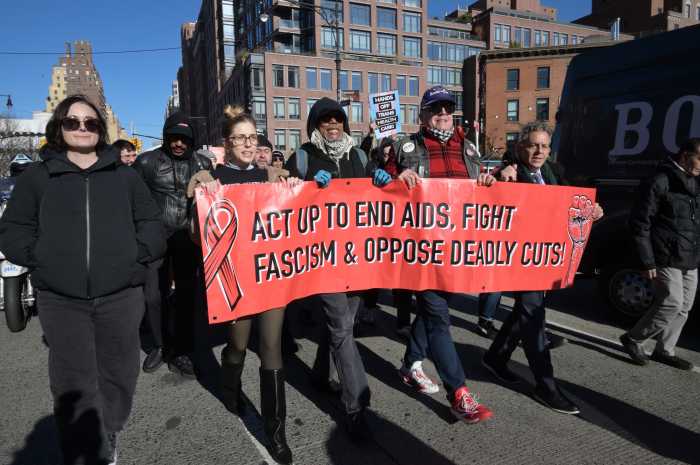Hilary Harkness’ women lay down the rivet guns to spray some real ack-ack
Mention of Mary Boone’s Chelsea gallery generates an expectation of big paintings.
In the current exhibition of new works, however, Hilary Harkness takes license to show three, and only three, relatively small paintings. Why three small paintings?
The paintings depict allegorical scenes—cross sections of lodges and ships peopled by lanky Caucasian pin-up girls. The women, clad in sailor suits and blue undergarments tailored to runway specifications, are active sailors, working on the deck of a battleship (“Crossing the Equator”), or indulgent participants in the sadomasochistic escapades during an officer’s leave (“Matterhorn”). The figures, evoking fashion illustrations of the 1940s, are psychologically in step with World War II imagery.
As America rededicates itself to a Cold War-like foreign policy, equating terrorists with Communists, these paintings retain a contemporary relevance.
Harkness’ characters are pretty, because that’s how mid-20th century America idealized women, and that’s how the nation sees itself today—America the beautiful. The quaint, prurient interactions depicted are indicative of nation-gobbling, as comprehended from a myopic national perspective. We only perceive ourselves as glamorous fantasies of who we should be, without attempting at all to understand foreigners, as evidenced by the nation’s mostly complacent media.
Though no doubt an oversimplification of a complex outlook, it is clear that, in part, Harkness, with her World War II iconography, invites the idea that her three works refer to the onset of the Third World War. The diminutive scale of the paintings in relation to the gallery reinforces the impression that her crystallized narratives are extracted from a vast swill of misunderstood history.
The appeal of Harkness’ female warriors is itself a mini- allegory of what the artist clearly perceives as the effort to construct an image of a kinder, gentler, but still bellicose America. The reality of what the girls are doing, whether they are torturing each other or handling the anti-aircraft guns, is made captivating through a stylish presentation, which is itself precisely targeted. These “little ladies” once promoted both cigarettes and saber rattling. They’re still around and we’re still buying.




































